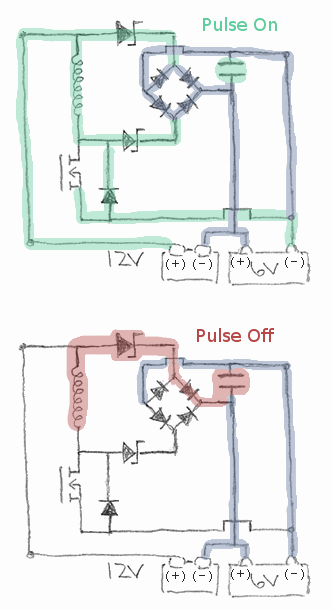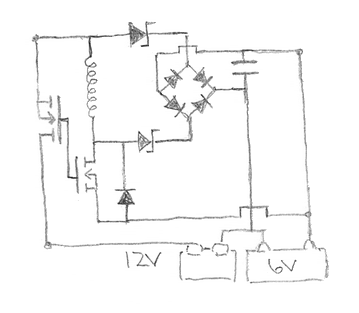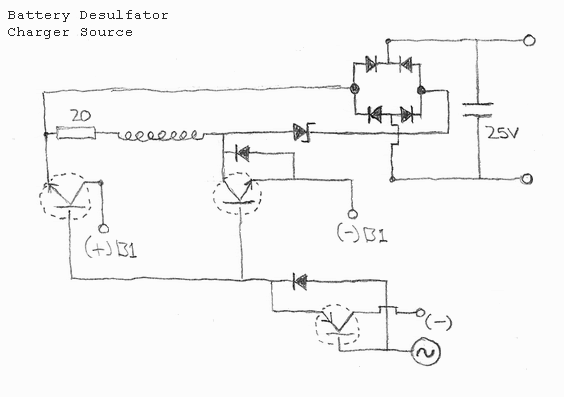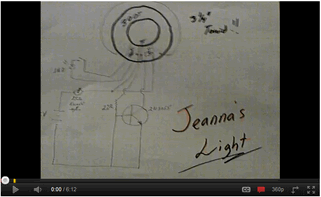Yes, I did indeed obtain a pulse from the cmos chip - and I very much appreciate
your help in this matter. The way I was thinking of this circuit when drawing it
was that perhaps having the upper schottky there would somehow help capture some
kind of emf from the collapsing magnetic field.
I've drawn the recovery cap connected to the center battery position as a guess; perhaps
its anode side could also be connected to the anode of the 1st battery?
Theoreticley,

your help in this matter. The way I was thinking of this circuit when drawing it
was that perhaps having the upper schottky there would somehow help capture some
kind of emf from the collapsing magnetic field.
I've drawn the recovery cap connected to the center battery position as a guess; perhaps
its anode side could also be connected to the anode of the 1st battery?
Theoreticley,


 Not sure the coil field will even collapse. The current needs to be shut off.
Not sure the coil field will even collapse. The current needs to be shut off.


Comment